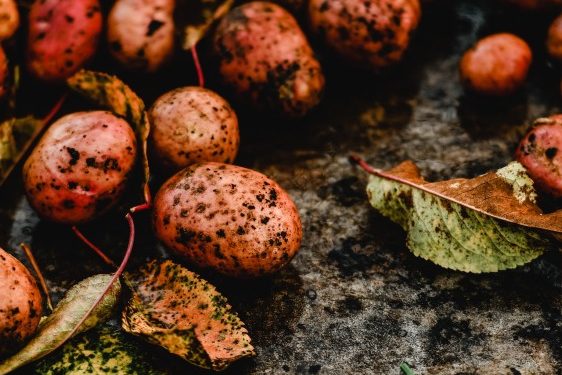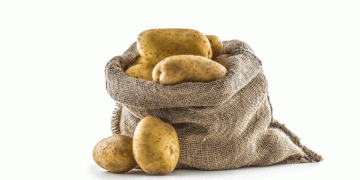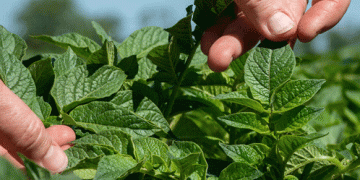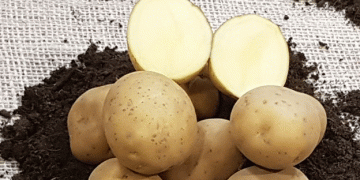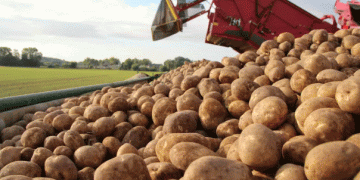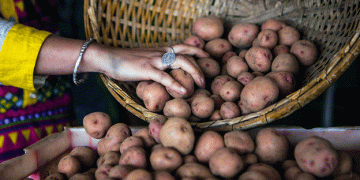In recent weeks, Ireland has experienced an unusual surge in temperatures, which, as per the weekly report from the Irish Farmers’ Association (IFA), is expected to have a minor impact on potato consumption. However, with schools resuming and normal routines returning, the influence on demand is anticipated to balance out.
Meanwhile, the new season’s “Rooster” potatoes are gradually entering the market as the harvest ripens. Prices for these potatoes currently range from 600 to 650 euros per ton in crates across the country. This year’s late planting season in Ireland has raised concerns in the potato market, with reports of growth cracks and fewer tubers per plant than usual. It’s worth noting that Irish potato producers have faced significantly increased expenses throughout the season, a fact acknowledged by most stakeholders in the supply chain, though not all.
Potato Market in Europe
Across Europe, potato yields for this season have been relatively average. In northern France, buyers are hoping for an increase in the yield of maincrop potatoes after receiving much-needed 30-50mm of rainfall. However, late plantings have hindered the development of tubers, leading to concerns about supply.
Despite these challenges, a glimmer of hope for producers comes in the form of early export inquiries from Spain and Italy, nearly two months ahead of the usual schedule.
United Kingdom
In the United Kingdom, reports have emerged of declining prices for M.Piper potatoes as producers strive to secure orders before the start of the storage season. Demand from chip shops remains relatively stable. Despite the price drop, there are also signs that an increasing number of producers are opting for storage rather than following the market’s downward trend.
Challenges and Opportunities
The potato market in Ireland and Europe is currently navigating a unique set of challenges and opportunities. While the heatwave in Ireland may initially seem concerning for potato growers, the expected return to school and work routines should help stabilize demand. However, the late planting season has raised concerns about supply and the quality of potatoes available.
In France, the hope for improved yields after rainfall provides optimism for the industry, despite the challenges posed by late plantings. Early export inquiries from Spain and Italy also present an encouraging development for European potato producers.
In the UK, the declining prices of M.Piper potatoes underscore the importance of securing orders ahead of the storage season. Producers need to strike a balance between immediate sales and long-term storage strategies.
Conclusion
As the potato market navigates the effects of unusual weather patterns and late planting seasons, adaptability remains key for producers and stakeholders. While challenges exist, such as growth cracks and supply concerns, there are also promising opportunities, including early export inquiries and stable demand from chip shops.
In the coming months, monitoring weather conditions and adjusting planting schedules will be crucial for ensuring a consistent supply of quality potatoes. Additionally, producers should remain agile in responding to market fluctuations and consumer demands.
Ultimately, the potato industry in Ireland, Europe, and the UK is resilient, and with careful management, it can weather the current challenges and continue to provide this beloved staple to consumers.
